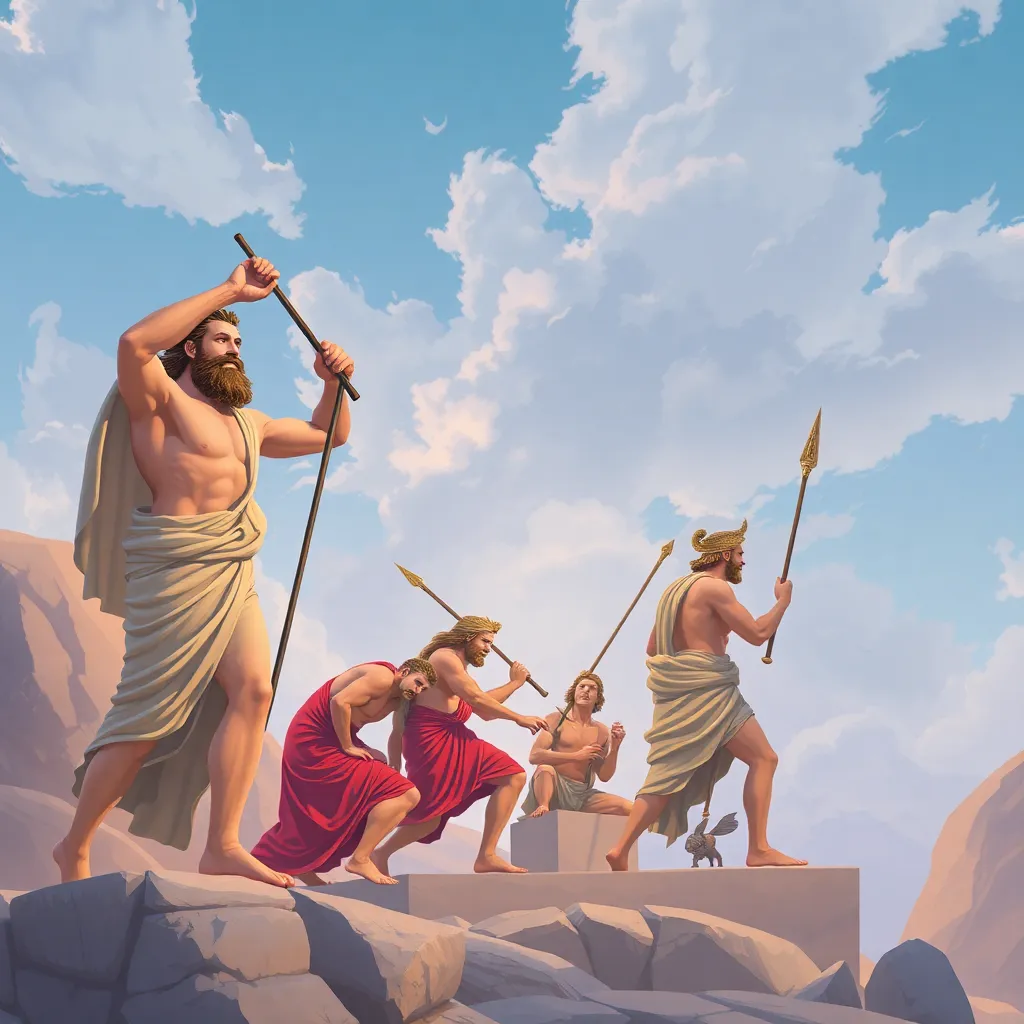The Twelve Labors of Heracles: A Deep Dive into Each Challenge
I. Introduction to Heracles and His Mythology
Heracles, known as Hercules in Roman mythology, stands as one of the most celebrated heroes in Greek mythology. Renowned for his incredible strength and daring adventures, he embodies the archetype of the hero who faces insurmountable challenges. His significance goes beyond mere physical prowess; he represents the struggle against adversity and the quest for redemption.
The Twelve Labors of Heracles are a series of feats that define his character and legacy. These tasks were imposed upon him as a form of penance, following a tragic episode fueled by madness, which was a consequence of the jealousy of Hera, the queen of the gods. This article aims to explore each of the Twelve Labors in detail, shedding light on Heracles’ journey and the lessons embedded in each challenge.
II. The Origins of the Twelve Labors
The origins of the Twelve Labors can be traced back to the tumultuous relationship between Heracles and Hera. When Heracles was born, Hera, feeling threatened by Zeus’s infidelity, cursed him with madness. In a fit of rage, Heracles killed his wife and children, leading to immense guilt and remorse.
Seeking redemption, Heracles consulted the Oracle of Delphi, who instructed him to serve King Eurystheus of Tiryns and complete a set of impossible tasks. The oracle’s prophecy laid the groundwork for the Twelve Labors, marking the beginning of Heracles’ arduous path toward atonement.
III. Labor One: The Nemean Lion
The first labor required Heracles to slay the Nemean Lion, a monstrous beast with impenetrable skin. This lion terrorized the region of Nemea, and many had fallen victim to its ferocity.
Heracles devised a clever strategy to confront the beast. He first attempted to shoot the lion with arrows, but they bounced off its hide. Realizing the futility of conventional weapons, he resorted to hand-to-hand combat, ultimately strangling the lion with his bare hands.
The Nemean Lion symbolizes the initial challenge that Heracles faces, representing not just a physical opponent but also the inner struggles he must conquer. It marks the beginning of his heroic journey, showcasing the importance of adaptability and resilience.
IV. Labor Two: The Lernaean Hydra
The second labor involved the Lernaean Hydra, a multi-headed serpent that resided in the swamps of Lerna. This fearsome creature had the ability to regenerate, growing two heads for every one that was severed.
To defeat the Hydra, Heracles enlisted the help of his nephew, Iolaus. As Heracles chopped off the Hydra’s heads, Iolaus cauterized the wounds with a torch, preventing them from regenerating. After a fierce battle, Heracles finally defeated the beast by burying its immortal head under a heavy rock.
The Hydra represents the challenges of growth and transformation. Each head that grew back signifies the obstacles one faces in life, and Heracles’ victory illustrates the importance of teamwork and clever tactics in overcoming seemingly insurmountable odds.
V. Labor Three: The Ceryneian Hind
In the third labor, Heracles was tasked with capturing the Ceryneian Hind, a sacred deer of Artemis, known for its incredible speed and golden antlers. This labor was unique in that it required Heracles to capture the hind alive without harming it.
Heracles pursued the hind for an entire year, demonstrating remarkable patience and respect for nature. He eventually managed to capture it by using his speed and agility, but he showed reverence for the creature by returning it unharmed to Artemis.
This labor emphasizes themes of patience, respect for the natural world, and the understanding that true strength lies not only in physical power but in the ability to coexist harmoniously with nature.
VI. Labor Four: The Erymanthian Boar
The fourth labor involved the capture of the Erymanthian Boar, a gigantic and ferocious creature that terrorized the region of Erymanthos. The boar was known for its strength and ferocity, making this task particularly daunting.
Heracles devised a plan to capture the boar alive. He chased it through the snow until it was exhausted and then trapped it in a net. He brought the boar back to Eurystheus, who was so frightened that he hid in a jar upon seeing the creature.
This labor reflects the qualities of strength, determination, and the ability to face one’s fears. Heracles’ success in capturing the boar alive symbolizes the triumph of perseverance over brute force.
VII. Labor Five: The Augean Stables
The fifth labor required Heracles to clean the Augean Stables, which were home to an immense number of cattle and had not been cleaned for years. King Augeas promised to reward Heracles if he could complete the task in a single day.
Demonstrating ingenuity, Heracles diverted two rivers to wash out the stables, completing the task in a matter of hours. This innovative approach not only showcased his strength but also his intelligence and resourcefulness.
This labor serves as a commentary on the importance of thinking outside the box and finding creative solutions to seemingly insurmountable problems.
VIII. Conclusion: The Legacy of the Twelve Labors
The Twelve Labors of Heracles not only illustrate his growth as a hero but also highlight the underlying themes of heroism, redemption, and perseverance. Each labor challenges Heracles in unique ways, pushing him to evolve and adapt.
Heracles’ journey resonates through myth and culture, symbolizing the eternal struggle against adversity and the quest for personal growth. His legacy reminds us of the strength found in determination and the importance of facing our challenges head-on, no matter how daunting they may seem.




